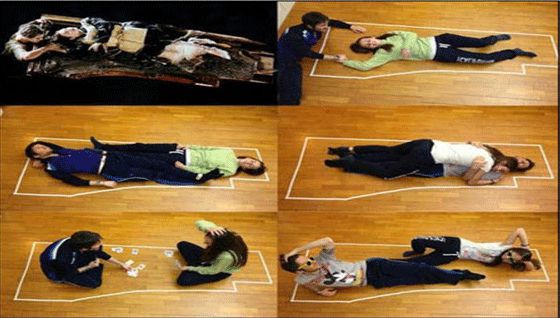*Updated 2023
Scientists have revealed the first-ever “exact Digital Twin” of the Titanic wreckage, the largest underwater scanning project in history that shows a never-before-seen view of the Titanic. Such revelatory details are shedding new light on the historical tragedy, and inspiring more fans to watch (or rewatch) the movie blockbuster Titanic, which recently celebrated its 26th anniversary. Fans, new and old alike, can’t help but think back to its moving climax, when the hero Jack sacrifices himself to save Rose. He remains submerged in the icy water and inevitably dies of hypothermia, while Rose is saved by lying on a wooden door floating on the ocean. But was his sacrifice necessary? This is a question that many movie fans are still contemplating, more than two decades later.
We examine three arguments that Jack could have joined her, and three that his heroic death was inevitable.
Three reasons why Jack could have fit on the door with Rose
There was enough space – just
After the movie, a lot of Titanic (and specifically Jack) fans spent a lot of time recreating the size and shape of the door that Rose was lying on in the movie, and then trying out ways to fit both people onto it. This image shows various ways that two adults could have squeezed onto the same jagged-edged door so that Jack could have been saved. In fact, in 2016, Kate Winslet, who played Rose, admitted to late-night TV host Jimmy Kimmel in an interview that there had been enough space on that door for Jack.

Source: Unknown
The raft could have been made buoyant enough
For years, Titanic director James Cameron rebuffed fans who insisted that there was enough space for Jack by telling them that the issue wasn’t space but rather buoyancy. However, a 2012 episode of MythBusters recreated this famous scene in slightly warmer surroundings. They showed that by tying Rose’s life jacket underneath the raft, it could have been made buoyant enough to support their combined weight.
They should have tried anyway
Fans of the movie have insisted on one unanswerable argument. Even if there wasn’t enough space or buoyancy in the raft for Jack, Rose should still have tried harder to save him. Perhaps the raft could have held up just long enough to save them both from hypothermia? We’ll never know, but thousands of viewers blame Rose for not trying. Jack is also not off the hook. As Neil DeGrasse noted on Huffington Post, “Whether or not he could’ve been successful, I would’ve tried more than once…The survival instinct is way stronger than that in everybody, especially in that character.”
Three reasons why Jack could not have fit on the door with Rose
It wasn’t buoyant enough
The movie clearly shows that Jack tries to get onto the door with Rose, and then stops as soon as he sees it begin to capsize. It’s obvious that it’s not buoyant enough to support the weight of both of them. The only options are for one of them to die, or for both of them to die. Jack did the heroic thing by sacrificing himself. Director James Cameron himself has long maintained that the door could not have supported both characters and noted in a recent interview that a recent forensic study also confirms this fact.
It was too cold
Director James Cameron points out that although the MythBusters might be correct about improving the buoyancy of the raft, their hypothesis isn’t possible in the freezing waters of the North Atlantic. Jack would have succumbed to hypothermia. He would be as good as dead anyway by the time he’d swum under the raft in 28-degree (Fahrenheit) waters and tied the lifejacket into place. Moreover, since Rose would have to get off the raft and wait in the water while he did that, she’d probably die of hypothermia as well.
It’s not in the script
Although there have been many attempts to prove that Jack could have been saved, Director James Cameron slaps them all down. As he pointed out in an interview with the Daily Beast, the script says “Jack gets off the board and gives his place to her so she can survive.” Jack was doomed to die because that’s what the script says, and no amount of space or buoyancy research can change that. According to Cameron, the thought process of Jack’s character was such that he wouldn’t have attempted to do anything to put Rose’s life in jeopardy, including getting on that raft.
The Bottom Line: Having examined the argument on both sides of this debate, we have to conclude that since Titanic is a scripted movie, James Cameron gets the last word. That being said, if you were Rose, and you were floating on a door with your love interest freezing to death after trying to board it once, and it almost capsized, what would you do?









